What is the difference between Champagne and other sparkling wines? In short, Champagne is only produced in the Champagne region of France, and that’s what we’re going to focus on in this particular article.
The History of Champagne
Initially a fairly pink wine, Champagne has evolved over the years into what we know it as today. It started, as with many wines, with the Romans who planted vineyards in the Champagne region in northeastern France. Early documentation shows the cultivation of the vines by the fifth century, but in all probability it began much earlier than that. When King Hugh Capet of France was crowned in 987 at the Cathedral of Reims, he started a tradition that required the local wine to be on prominent display at coronation banquets. Initially made of pinot noir, the start of Champagne began out of nothing more than spite. The Champenois were so envious of the wines and the reputation that the Burgundians received for their wine they set out in an effort to craft a better quality wine to gain respect and acclaim on a global scale, or at least throughout France. What resulted initially was problem after problem. The region was incapable of producing fully ripened grapes that lacked acidity and made them very light bodied and thinner than the Burgundies they tried so fervently to compete with.
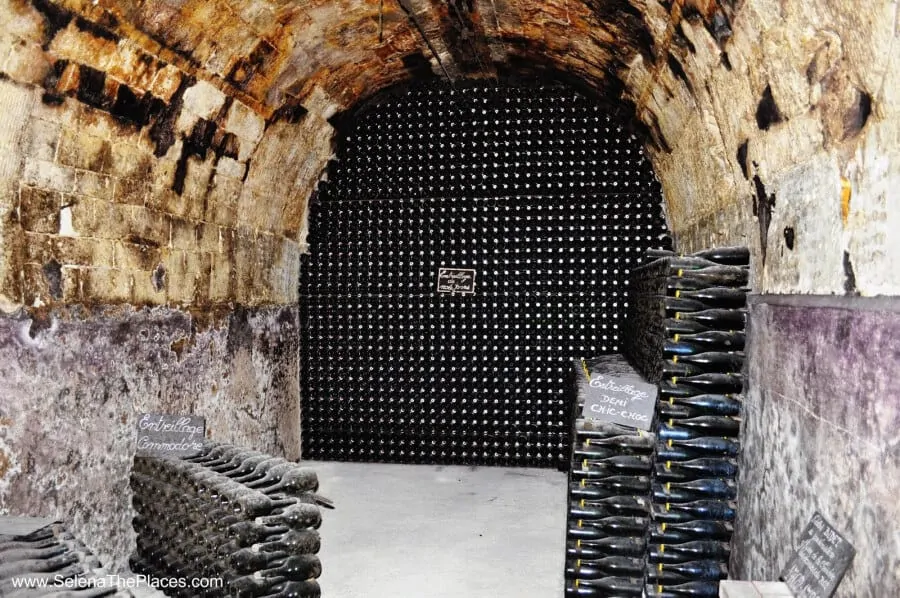
With cold winters, the fermentation also stopped which left the yeast sleeping only to awaken in the warmer spring and summer months. With the release of the carbon dioxide, bottles began to explode in their cellars wreaking havoc for the producers. The few bottles that did survive would contain bubbles that at the time wasn’t something that was trying to be achieved.
It was this happy accident that would turn to a celebration for the Champagne region. While their French customers wanted a still wine and not sparkling, the British had begun to develop a love for the unique wine, and it was growing in popularity amongst the aristocrats of London. With the evolution and it’s scale of popularity, the Champenois began to purposely try and keep the wine from bursting yet ensuring it wasn’t still and creating even more bubbles. The only problem left was making wine bottles that were strong enough to withstand the pressure.
By the mid-nineteenth century, this problem was overcome. Companies such as Krug, Pommery and Bollinger began to operate, and the world fell in love with Champagne and it’s unique bubbles.
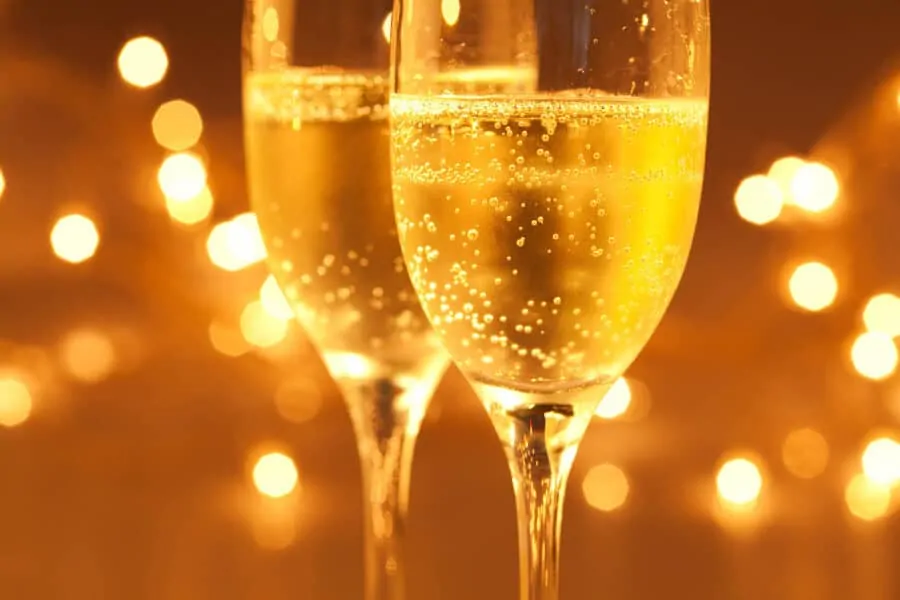
Then, in the twentieth century, Champagne took a hit, first with the Phylloxera outbreak and then riots in 1910. The Russian Revolution and Prohibition lost Russia as a client, and two world wars caused the region to become a battlefield. Still, the Champagne houses forged through and secured their spot in the more modern history books.
Today, the region is known for its luxury wine and produces more than 200 million bottles of Champagne each year which are purchased on a global scale. In fact, Champagne has become so popular it’s pushed French authorities to consider expanding the AOC zone that regulates where it can be produced.
What is Champagne
Champagne, as discussed, comes exclusively from the Champagne region of France, despite many people using it as a casual term to denote a sparkling wine. Primarily, Champagne uses the black Pinot noir and Pinot Meunier grapes, but can also include Chardonnay. The reason for the limited grapes is that, in accordance with appellation law, the grapes must be grown in designated plots within the AOC if they want to be used in Champagne. Due to the regions climate and weather, very few grapes are successfully capable of properly growing in the region.
The reason it’s so widely known as a luxury beverage is due to its long history of being consumed by royalty during the 17th, 18th and 19th centuries. As such, Champagne producers spend large amounts of money on advertising in efforts to appeal to nobility through elegant and refined branding practices.
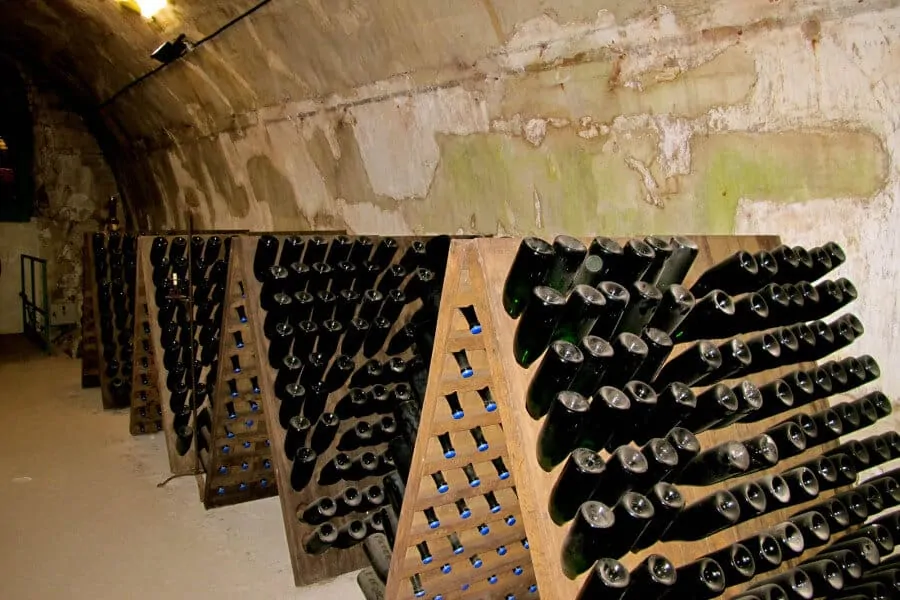
While the bubbles are certainly contained in the wine, the first burst of effervescence is caused by tiny imperfections in the Champagne flute when the fluid hits the dry glass on pouring. However, after the first burst, the imperfections aren’t typically strong enough to facilitate nucleation, and the effervescence subsides rather dramatically allowing the glass to be filled.
With more than a hundred Champagne producers and almost twenty thousand smaller houses in the region, combined they manage a total of some 32,000 hectares of vineyards in the area. On every label of champagne, there is an abbreviation (as follows) with an official number:
NM: Négociant manipulant.
These houses that include the vast majority of the larger brands buy grapes and make the wine from them.
CM: Coopérative de manipulation.
These are cooperatives that make the Champagne from the growers who maintain membership with the cooperative and pool the grapes together.
RM: Récoltant manipulant.
These are growers that make the Champagne from its own grapes with a maximum of 5% of purchased grapes being permitted.
SR: Société de récoltants.
These are members of an association who make a Champagne shared between them but aren’t a cooperative.
RC: Récoltant coopérateur.
A coop member selling Champagne that is produced by the cooperative under their own brand name.
MA: Marque auxiliaire or Marque d’acheteur.
A brand with no relationship to the grower or producer such as a supermarket house brand like Trader Joe’s. The Champagne is still valid since it’s made in France. However, it’s licensed to a third party organization.
ND: Négociant distributeur.
A liquor store or wine store selling the Champagne under their brand name.
Since Champagne is a single appellation d’origine contrôlée, as a steadfast rule, only the Chardonnay, Pinot Noir, and Pinot Meunier grapes can be used in the wine. Since there’s an absence of skin contact during the fermentation process, and gentle pressing is used over a harder press, the wine typically ends up being white passed. Most Champagne, regardless of who it’s made by, usually is made using all three grapes although Blanc de Blanc Champagne exclusively uses Chardonnay, whereas the Blanc de Noir uses only the Pinot Noir and Pinot Meunier grapes.
There are four other styles of grapes that are technically permitted, but they’re rarely used. In total, there are seven grapes that can be used in today’s Champagne being Arbane, Petit Meslier, Pinot Blanc, Pinot Gris and the three already discussed. They only amount to about 0.02% of all the vines planted in Champagne.
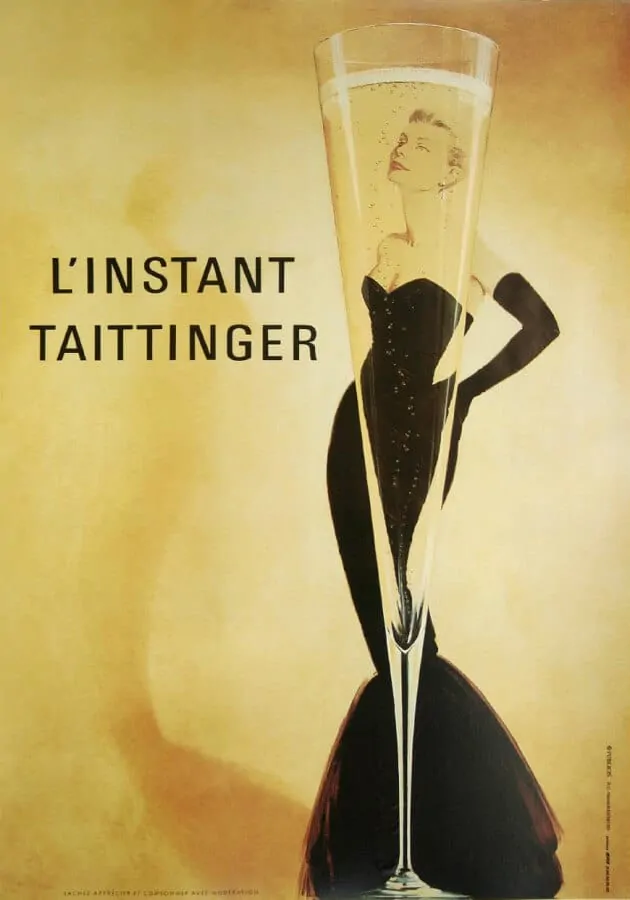
The Chardonnay grapes are what gives Champagne it’s wonderfully acidic nature and biscuit flavors. It’s grown on a strip in the south of Épernay, called the Côte des Blanc including the villages of Oger, Le Mesnil-sur-Orger and Avize.
It’s the Pinot Noir and Pinot Meunier which provide the body to the wine and give it its lengthy character. They grow well due to the slopes they’re planted on which causes heat from the warm winds that rise from the valley below. Typically, they’re planted in Montagne de Reims and Vallée de la Marne on the northern facing slopes.
Most of the Champagne you find today is blended which makes it non-vintage. It’s usually based on a single year with the winemakers blending anywhere from 10-15%, sometimes even as high as 40%. If conditions happen to be beneficial to producing a vintage wine, the producers will make a vintage comprised of at least 85% of the grapes from the vintage year. Due to the legislation that controls the Champagne name, houses that make vintage and blended wines can only use up to 80% of the total vintage harvest when producing a vintage bottle.
Rosé Champagne
You may have read our recent Rosé wine guide, and I’m pleased to tell you there are also Rosé Champagnes, some of which can be quite expensive but well worth the investment. The Rosé Champagne is produced by leaving the clear juice from the black grapes to macerate in its skin for a slightly longer time, which, as we discussed in the rosé wine guide is called the saignée process. The other way this is achieved is by adding a small amount of Pinot Noir wine to the cuvée. This is usually the method used to introduce the color to the wine. In fact, one of my favorite Champagnes is the rosé Krug.
It should be mentioned that although we’ve previously discussed how it’s rare for wines to add red wine for coloring, Champagne is one of the few wines that allow this during production. The reason this is allowed is simply to ensure quality control and that the color remains consistent with each bottling, whereas it could be uncontrollable should they use the saignée method of coloring the wine.
Styles of Champagne
The ripeness of the grapes and the amount of sugar added after the second fermentation is usually quite variable and is done to maintain the levels of sugar that remain in the bottle when it is available for commercial sale. Each bottle is labeled with a term to allow you as the consumer to discern how sweet it will be.
Extra Brut – Less than six grams of residual sugar for each liter of champagne.
Brut – Less than twelve grams
Extra Dry – Between twelve and seventeen grams per liter
Sec – Between seventeen and thirty two grams per liter
Demi-Sec – Between thirty two and fifty grams per liter
Doux – Fifty grams
Although historically Champagne was quite sweet, today Brut is the most common style of Champagne sold today.
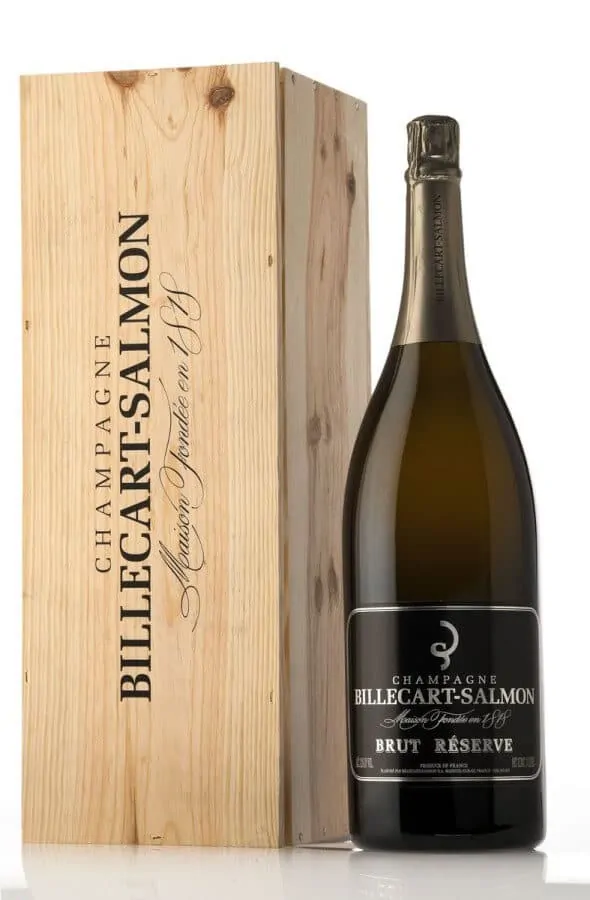
Bottling
Champagne is typically available in two different sizes, the standard of which is 750ml and the larger, called a magnum which is 1.5 liters. The reason we discuss this is that magnums are typically of higher quality, even if it’s the same champagne. The reason for this is that there’s less oxygen in the bottle so the volume to surface area works to create better sized bubbles that are more consistent. There are other sized bottles but these are the two most commonly found ones in wine stores today.
Serving Champagne
Champagne should always be served in its namesake Champagne flute, which is a wine glass with a long stem and a tall but narrow bowl. The sides are very thin and the bottom is etched to help enhance the burst of bubbles. One other way to serve it is in what’s called a Victorian Coupe which is actually in the shape of a mould of Marie Antoinette’s left breast that was given to her husband King Louis XVI. The Coupe disperses the nose and over oxygenates the wine. I always recommend a flute unless you’re looking for a good story to tell.
Champagne should ALWAYS be served cold. Ideally, between 45-48°F. It’s appropriate to chill the bottle in a bucket of ice water prior to uncorking it. This also helps to ensure less spillage as the Champagne won’t burst due to the frigid temperature.
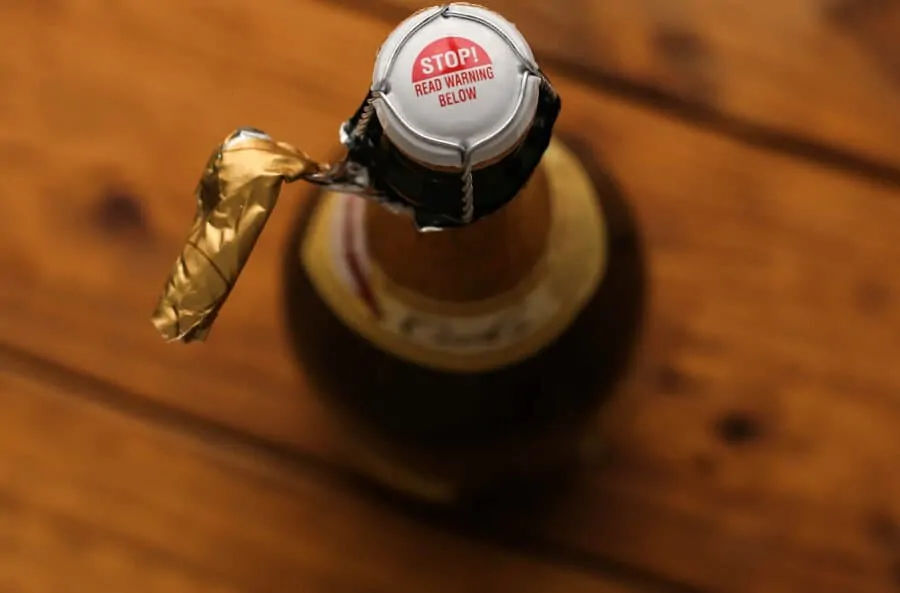
How to Open Champagne
Hold the champagne by the cork tightly and the neck of the bottle ensuring a tight grip. Holding the bottle at an angle,slowly rota te the bottle keeping the cork securely in your hand. The goal is to ease out the cork and not have it fly across the room. Another way is using a saber in a technique called Sabrage. With a swift swipe at the bottle it cuts the head right off. Of course, I recommend using your hands to uncork it. With enough practice you’ll get good enough you won’t spill a drop.
Pouring Champagne
To pour the champagne tilt the flute at an angle and proceed to pour the champagne down the side almost in a sliding fashion. This will preserve most of the bubbles instead of creating more bubbles than wine. This is another reason why it’s important for Champagne to be served cold as it results in a reduced loss of gas. There are some glasses for sale that even advertise that they improve the loss of dissolved CO2.
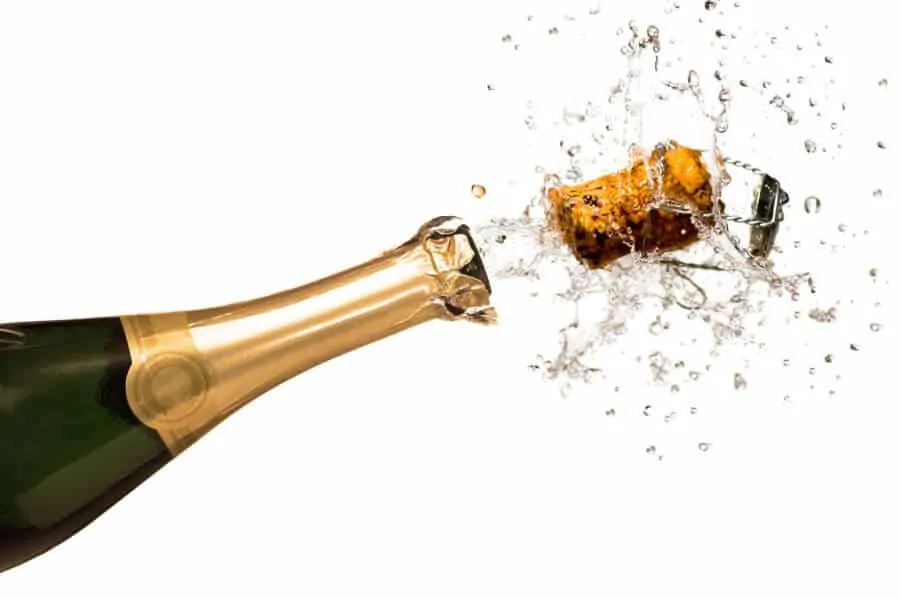
When to Serve Champagne
Champagne has long been considered a celebratory drink. Many sports teams use it to celebrate a win, my wife and I have used it to celebrate various life events like our marriage, anniversaries and buying a new home. In fact when we moved into our house five years ago we spent the first night there without furniture but we were so excited to be there since it was the first house that we owned. Prior to that we lived in an apartment. I have fond memories that day of breaking all the rules and sitting on the floor of our bedroom drinking Champagne out of plastic red beer cups. I’m certain when we buy our next home, out of tradition we will probably do the same. I should note that every other time we drink Champagne it’s done so out of a flute glass and not a plastic cup or any other form of glassware.
Learn More About Spirits & Drinks
Bottles You Should Try
First of all, you should really put an effort into sampling some not-so-well known Champagnes. The price will be lower than for bottles from big, well-known houses with huge marketing budgets, and at the end of the day it all depends on your palette. Of course, many associate a certain glamour with Champagne and they feel more glamorous themselves when they drink it. At the end of the day, it’s all up to you.
Some, more easily available Champagnes in the U.S. include:
Moët & Chandon Dom Perignon White Gold – Approx. $10,000 US
A monster of a bottle for people without a budget. At three liters, this lavish Dom Perignon, which is often considered the grandfather of Champagne houses, created this bottle for those wanting to celebrate in a grand scale and fashion. This is not your average bottle and one I’ve only personally seen once. At $12,000 the bottle is housed in a white gold sheath. If you’re looking for something less expensive but also quite lovely, try the standard bottle of Dom Perignon available at around $200.
Pol Roger Sir Winston Churchill – Approx. $220 US
Rich, biscuity and full bodied, this bottle was introduced by Pol Roger in 1984 in honor of Sir Winston Churchill who was a longtime customer of the house. In fact, Churchill was such an avid fan of the Champagne house that he would order boxes of it to commemorate every event. It necessarily follows that when Pol Roger undertook the role of honoring their great friend and customer, no exceptions were made and they created one of the greatest and most iconic Champagnes of all time to pay homage to the man who drank more than 500 bottles in the last decade of his life alone. You can read more about Pol Roger here.
Krug Clos d’Ambonnay – Approx. $2,500
One of my favorite Champagne houses, Krug created this incredible Champagne which is made from a single grape variety, a single year and a single vineyard near the village of Ambonnay.
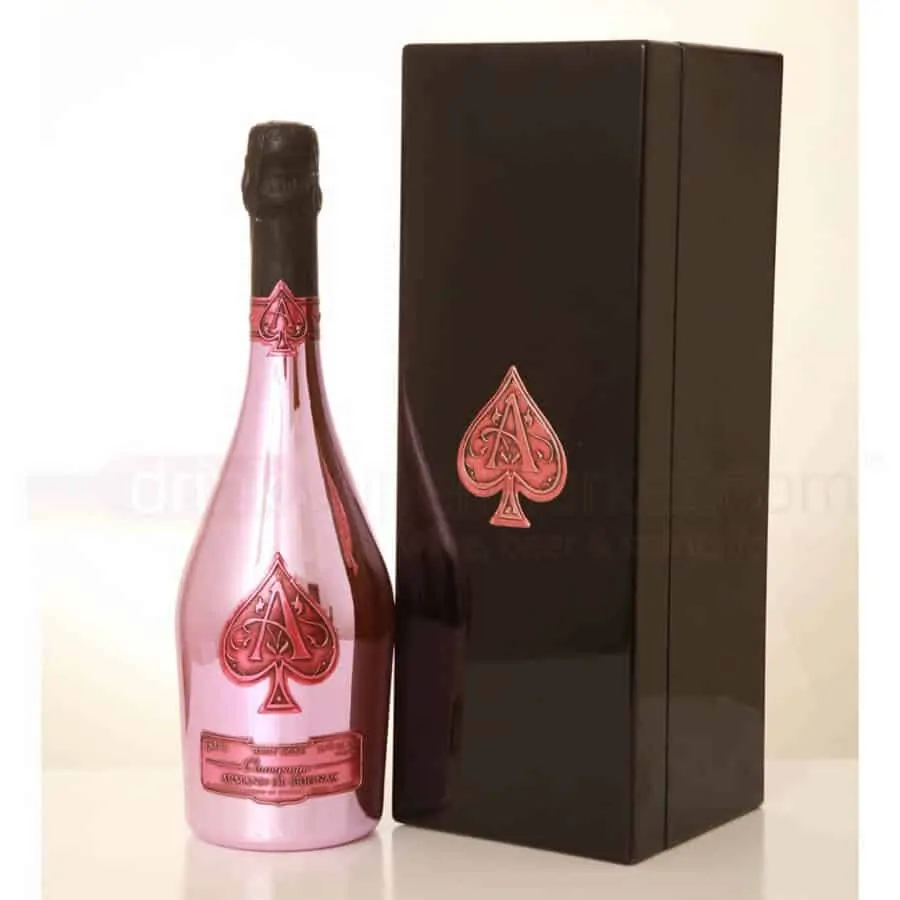
Champagne Armand de Brignac Ace of Spades Rosé – Approx. $475
The perfect bottle for romantic occasions, this Champagne comes in a shiny black case that once opened showcases a bright pink bottle with a rosé Champagne brightened with the addition of Pinot noir. It has distinct black current and strawberry notes and is really unlike anything you’ll ever try.
Conclusion
We hope you’ve enjoyed this primer on Champagne. There is so much that can be discussed on the topic but, of course, we are somewhat limited in space. Stay tuned for future articles on specific bottlings and the houses that make them.
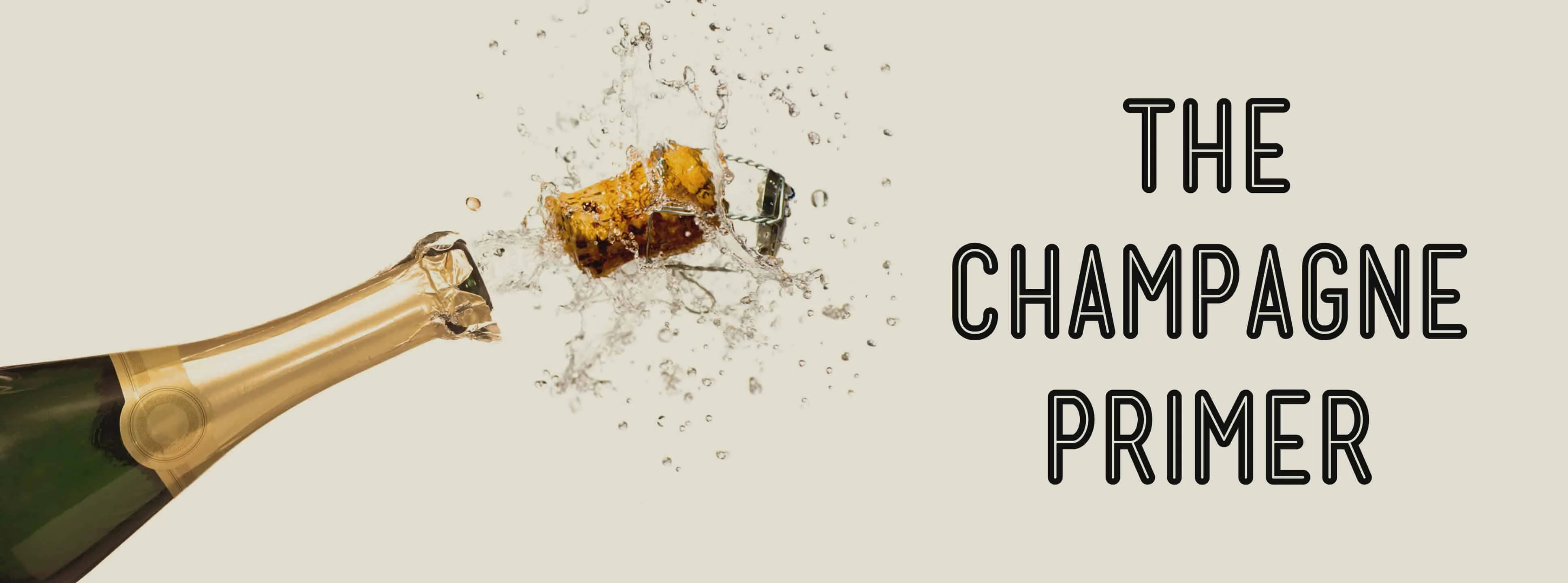
champagne oui
cuvee MARIE ANTOINETTE Marie LARNAUDIE
canard duchesne cuvee charles vii
millesime blanc de blanc – rosé –
un champagne d’EXCEPTION de MARCEL VAUTRIN – Bouché non par un muselet en métal – mais à l’ANCIENNE – PAR UNE FICELLE de cha Entrcroisée
On the recommendations list, I would leave out the Armand de Brignac (“bling bling” culture) and replace it by a Veuve Clicquot Grande Dame instead.
crystal and the churchill champagne mentioned were beaten in blind tastings by an italian spumante called kral , cost 20 euros
sorry it was randolph churchill , price around 160 euros